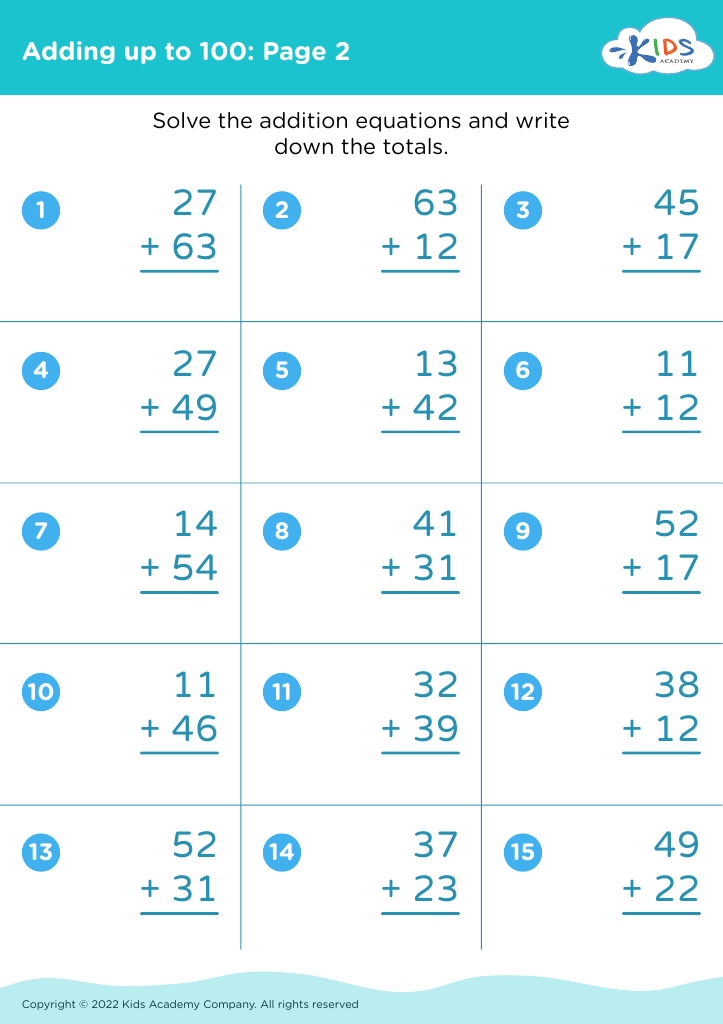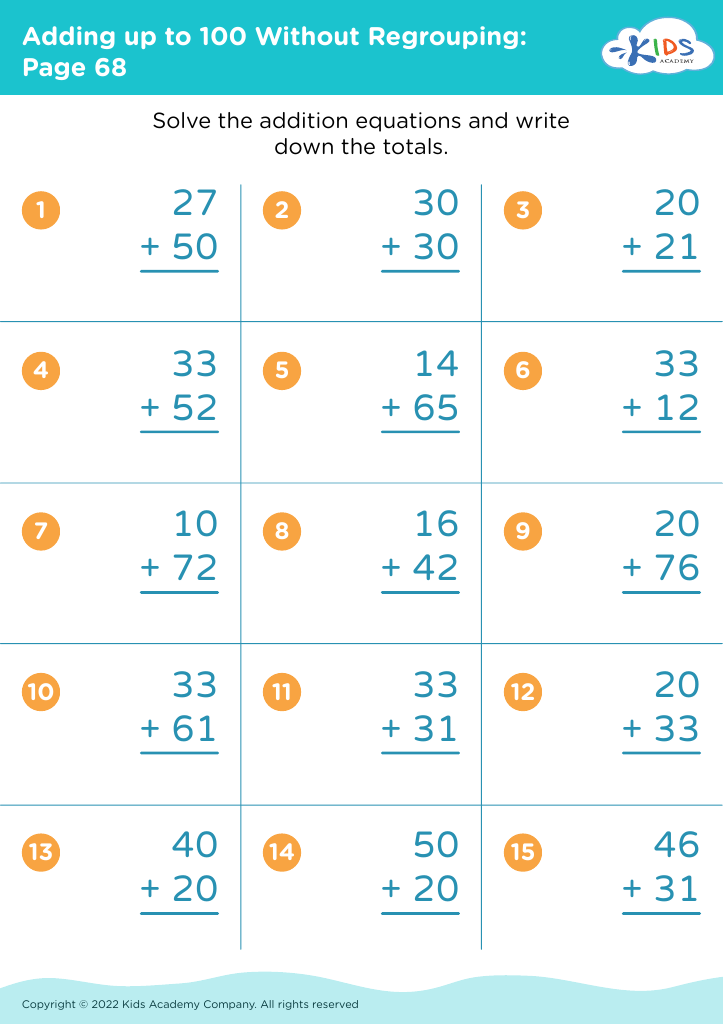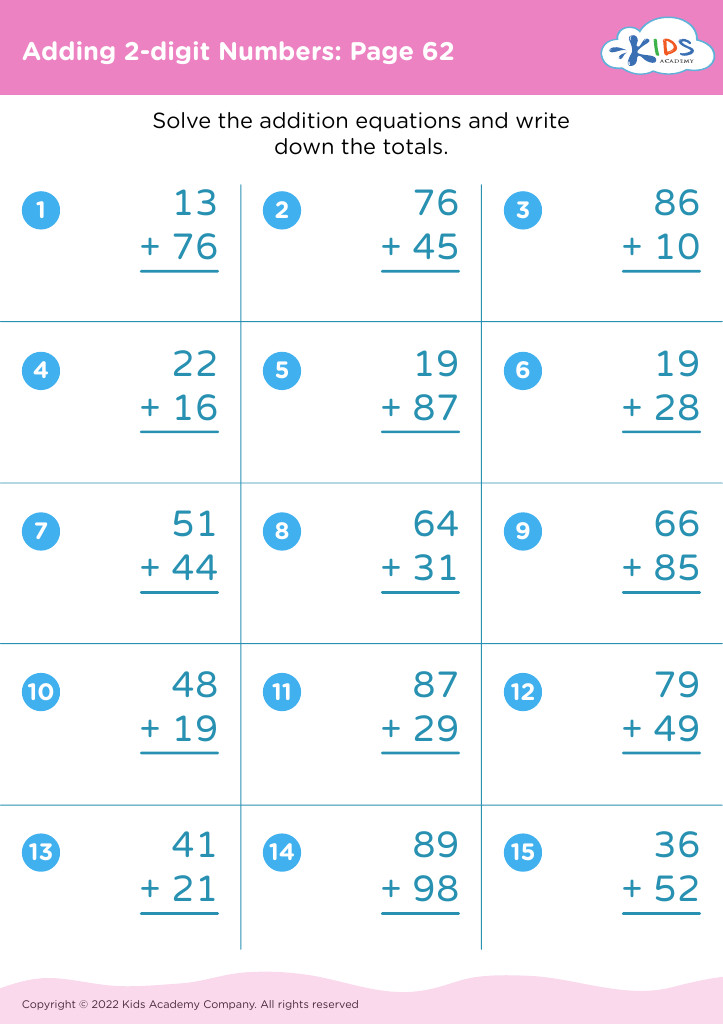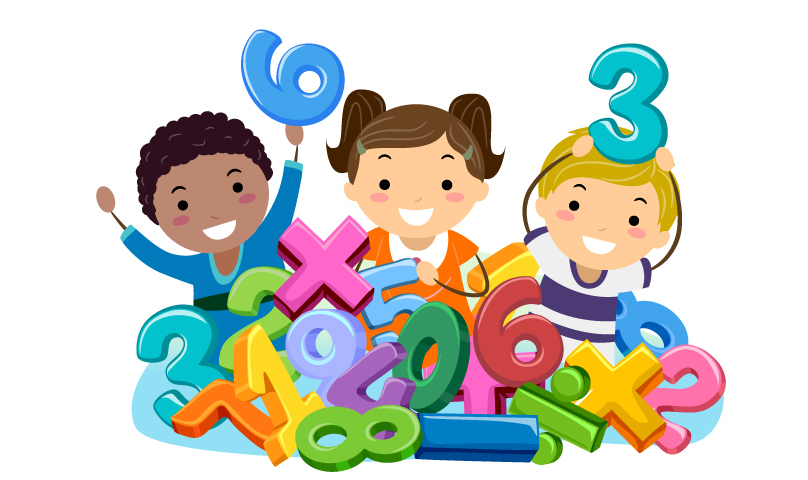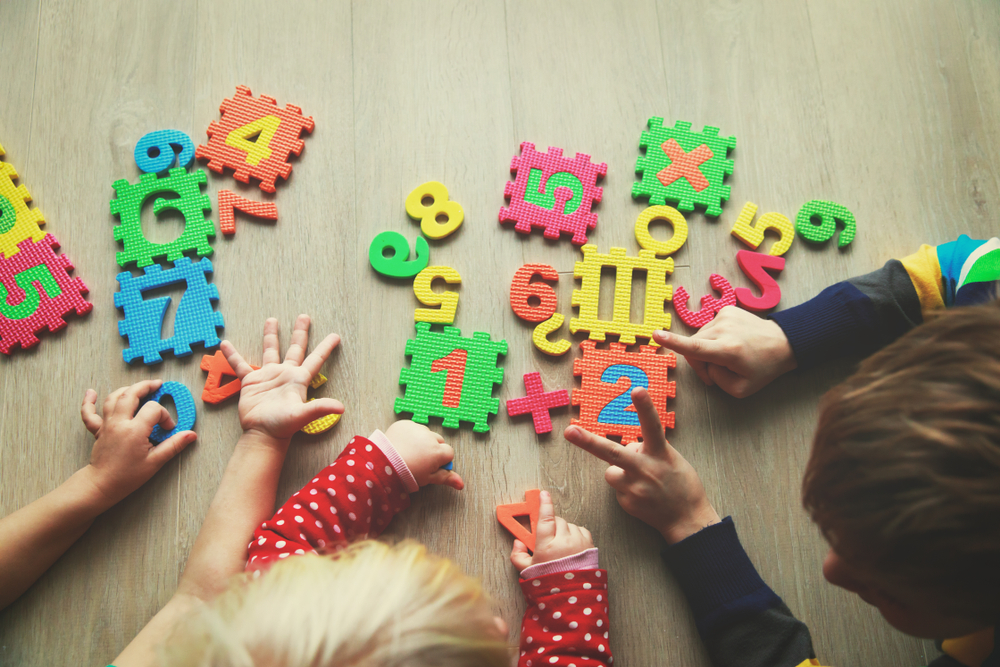Learning number patterns Addition Worksheets for Ages 7-8
3 filtered results
-
From - To
Discover engaging Learning Number Patterns Addition Worksheets designed specifically for children aged 7-8! These worksheets will help young learners develop essential skills in recognizing and working with number patterns through fun and interactive activities. Each worksheet challenges students to explore addition within patterns, reinforcing their math abilities while enhancing critical thinking. Perfect for both classroom settings and home practice, our worksheets cater to different learning styles and pace. Boost your child's confidence in math while making learning enjoyable. Explore a variety of exercises that spark curiosity and ensure a solid foundation in number patterns and addition! Let’s make math exciting today!
Learning number patterns in addition is a crucial aspect of mathematics for children ages 7-8, as it lays a foundation for more complex math concepts. Understanding patterns helps children recognize relationships between numbers, which enhances their problem-solving skills. When children can identify addition patterns—like when numbers are grouped or incremented—they develop a stronger number sense and the ability to predict outcomes. This boosts their confidence and encourages a positive attitude towards math.
Moreover, patterns facilitate mental math strategies, allowing students to perform calculations more swiftly and accurately. When students see that 2 + 3 is the same as 3 + 2, or they notice that adding ten to any number simply shifts that number to the next decade, they are able to approach math with a logical mindset.
For teachers and parents, fostering an understanding of addition patterns not only supports academic growth but also engages learners in a fun and interactive way. Children are more likely to take ownership of their learning when they see the relevance of numbers in their everyday lives. Ultimately, helping children grasp these concepts paves the way for future success in mathematics and critical thinking skills, making it a worthy focus in educational settings.
